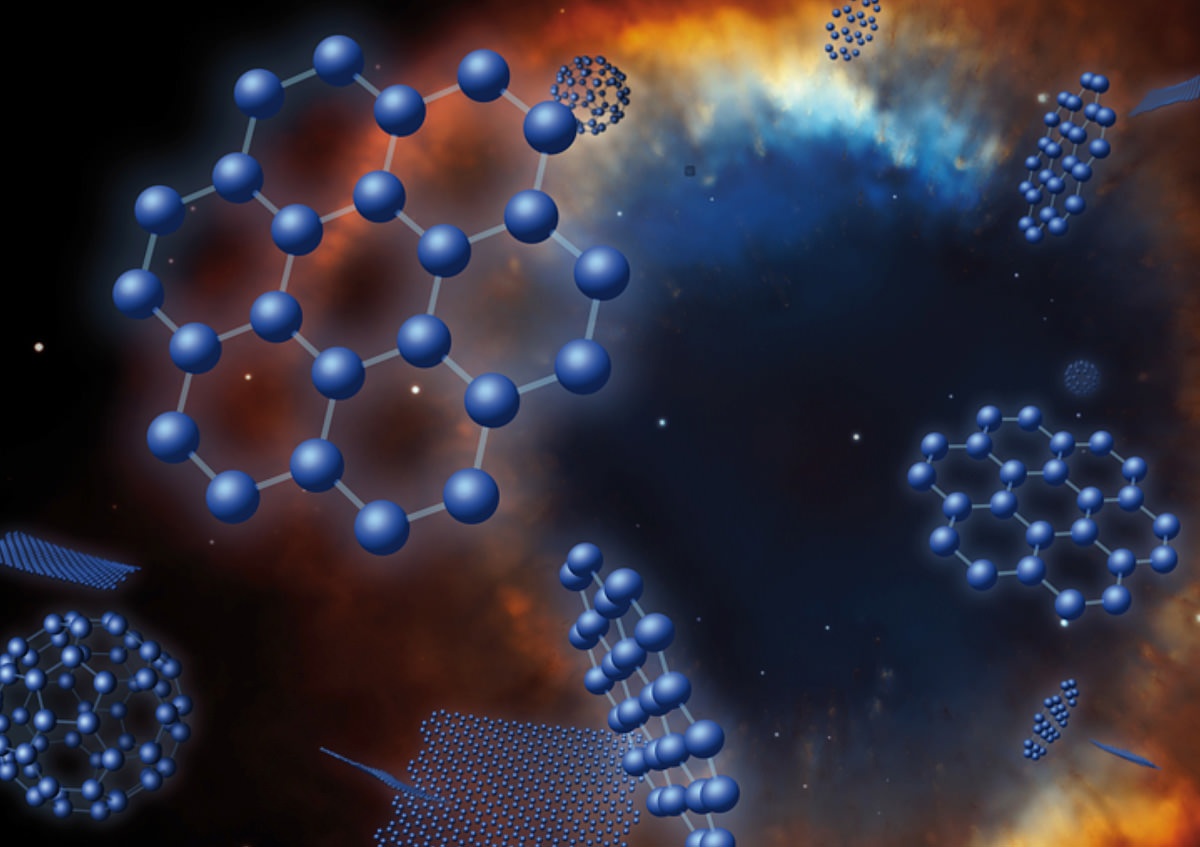Graphene has long been put forward as a wonder material. Undeniably, it has astounding properties – stronger than steel, a better electrical conductor than copper, and lighter than almost anything else with similar properties. And while it’s been partially adopted into space-faring technologies, many use cases remain where a pure form of the material could dramatically benefit the space industry. To detail those opportunities, a group of scientists from the Italian Space Agency recently released a paper that looked at graphene’s role in space exploration – and where it might stand to make an even bigger impact shortly.
When used in space technologies, it is simply returning to a place where it already exists naturally. Research has shown that up to 1.9% of interstellar medium carbon is made of graphene. It is created during the destructive process of a star going through its death throes and spreads throughout the galaxy as part of that process.
Unfortunately, recreating a supernova isn’t particularly easy here on Earth (just ask any nuclear physicist). And creating graphene here on Earth isn’t easy either – at least not at the scale necessary for its full material properties to become realized. But even a little graphene added to the mix makes a difference.
Credit – Nixene Publishing YouTube Channel
Typically, engineers combine graphene with different metals and polymers for space applications, giving rise to a class of materials known as nanocomposites. Even this tiny amount of wonder material can have significant positive benefits for the results composite – whether increasing its thermal conductivity or stiffness. Some composites can even be used as sensors, with their output controlling things like rocket positioning.
Other use cases, like solar sails, antennas, and anti-wear systems, show how versatile graphene can be. But where do we go from here? There still isn’t a way to successfully craft pure graphene with the physical properties we desire. But there is plenty of research on how to do that.
As with so many other areas of scientific research lately, China is leading the charge in developing that methodology. According to the paper, China controls 71% of the global patents on graphene, and 8 of the top 10 universities researching graphene are located in the country. China also has a robust space program, but its space economy is not as well developed as the US or EU, so it may take a while before any advancements in the country are more widely adopted into the space industry.
Credit – Verge Science YouTube Channel
But overall, the paper does a reasonable job of describing potential use cases, obstacles, and opportunities for the use of graphene in space. There is still work to do before the wonder material becomes useful in the harshest environments. However, given its potential, an artificial form of graphene will undoubtedly one day return to the interstellar void where it was initially developed.
Learn More:
Scalia et al. – From Protosolar Space to Space Exploration: The Role of Graphene in Space Technology and Economy
UT – A New Method for Making Graphene has an Awesome Application: A Space Elevator!
UT – One Step Closer to Interstellar Travel. A Successful Microgravity Test of a Graphene Light Sail
UT – Graphenes In Spaaaaaace!
Lead Image:
A depiction of graphene in space.
Credit – IAC
Original image of the Helix Nebula -NASA, NOAO, ESA, the Hubble Helix Nebula Team, M. Meixner, STScI, & T.A. Rector, NRAO.

